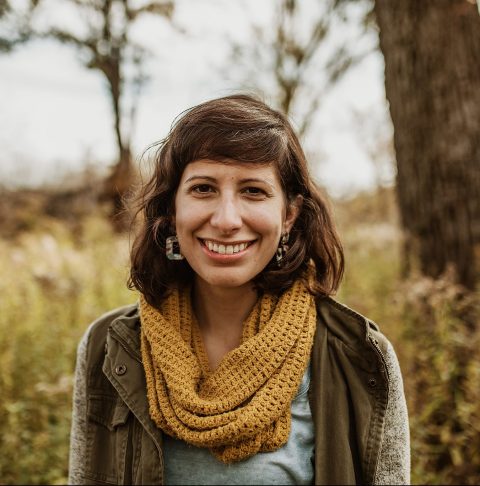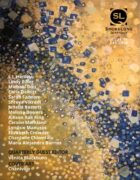Since the story is set up as an epistolary response to the narrator’s therapist, I wonder if you took any inspiration from existing stories of that kind? Do you have any favorite letter writers?
This story actually ended up being epistolary sort of by accident! I sat down with the intention of writing a straightforward first-person story, and the “you” suddenly showed up. I realized the narrator was addressing her therapist, and the story fell into place.
I didn’t realize this until you asked, but this approach was definitely inspired by two of my favorite novels I’ve read this year. Just before lockdown started, I finally read the stunning Gilead by Marilynne Robinson. For anyone who hasn’t read it yet, the novel is told in the form of a letter from an elderly, dying pastor to his young son. It feels like a combination of a love letter, self-reflection, and even a sort of conflicted warning. I also recently read I Capture the Castle by Dodie Smith, a coming-of-age story told through journal entries. Both of these novels got me really interested in framing stories in a way that gives them a reason to exist (besides me writing them!) and adds another layer of complexity. I love how the “you” of address draws the reader into the story and can feel almost accusatory.
Two of the natural elements of the story, cicadas and snails, are sometimes treated as pests by agriculture. I love that you are adapting these leavings (husks) and livings (shells) as models for the stages of grief. What drew you to use these common invertebrates? Any weird facts that convinced you to center them in the story?
Thank you! This story started with cicada husks. All summer, my five-year-old son was constantly finding them everywhere. He piled them up on the back step. There’s something so evocative (and pretty creepy, if I’m honest) about them. They have all the structures of the insect before it molts, but papery and empty. I love how you describe these elements as “leavings.” That was what drew me to these as symbols of grief—the idea of these leftover husks and shells as evidence of life that is no longer present, the idea that they were once full and now empty. From a more big-picture standpoint, there was something fascinating and eerie about seeing these shells, husks, eggs, feathers, and other “leavings” piled up all summer. The cicada husks were so special to my son, but they made me squeamish—especially the claws and legs, and the way they crunch when you step on them. I was curious about creating a situation where they could become precious and significant, evidence of something lost.
We have to creatively rewrite the stages of grief for a sequel: 1) How many stages are there? and 2) What are those new stages called?
I love this question, but it’s also really difficult to answer. I haven’t experienced grief like this narrator with the loss of her son. But I think the stages of grief are probably nonlinear and manifest differently for each person. The traditional five stages by Elisabeth Kübler-Ross were actually based on what terminally ill people experience, not on how people grieve. In reality, there’s no right or wrong way to grieve and it doesn’t magically end with acceptance. For this narrator, I imagined that grief manifested in some of these ways: despair, emotional numbing, the gathering of husks (like in the story). Guilt over her sense that “tempting fate” with her therapy plan could’ve made this happen. Blame focused on her therapist, to counteract the guilt. Loneliness and fantasy. Looking at old photos. Small bursts of hope. That’s nine “stages” and I feel like there could be more.
Where did the couple end up going tonight? Who ordered which item on the menu?
I think they went somewhere they’ve never been before. Somewhere they can try to talk and break new ground together without comparing the experience to old memories. Maybe a neighborhood bar with low light. They don’t have a big appetite, but they share a charcuterie and a mulled wine-inspired drink from the winter menu. I’m realizing as I write this that I’m basing it off my favorite winter drink here in Madison—wishful thinking during this time of lockdown! But it’s also a spicy, warm, comforting drink. It feels like something they would order.
How many voicemails from the therapist are on the narrator’s phone? What do they say? Can you recreate one for us here?
I imagine her therapist would’ve left three or four messages. One after the narrator missed a session, with the purpose of rescheduling. One to follow up again, and then a third and maybe a fourth when the therapist started to understand that something significant had happened. I’ll take a stab at recreating one here:
“Forgive me for checking in again. I want to respect your choice to stop counseling, but it is abrupt. I’m wondering what happened. Please know that it’s very normal for therapy to bring up challenges at first. Would you be willing to try a phone conversation? Or texting, if that’s easier? You have my email address if you want to reach out that way. I’m concerned about what you might be experiencing. Abrupt endings can leave a further negative impact. At the very least, we can process the work you’ve done. I want to help you find a sense of closure. But of course, whatever you choose, you have my support. Please reach out however feels comfortable to you.”



 The SmokeLong Grand Micro Contest (The Mikey) is now an annual competition celebrating and compensating the best micro fiction and nonfiction online.
The SmokeLong Grand Micro Contest (The Mikey) is now an annual competition celebrating and compensating the best micro fiction and nonfiction online.